Connecting the motor from a Bosch washing machine
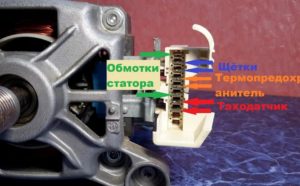 If the washing machine fails, but the motor remains intact, then do not rush to throw the machine in a landfill - some parts, for example, the motor itself, can be adapted on the farm. This is a useful device in everyday life, which in skillful hands will turn into an electric sander or crusher. You just need to use your imagination and understand the engine design. We suggest considering how to connect the motor from a Bosch washing machine to electricity for subsequent inventions. We will explain all the nuances and show the diagrams.
If the washing machine fails, but the motor remains intact, then do not rush to throw the machine in a landfill - some parts, for example, the motor itself, can be adapted on the farm. This is a useful device in everyday life, which in skillful hands will turn into an electric sander or crusher. You just need to use your imagination and understand the engine design. We suggest considering how to connect the motor from a Bosch washing machine to electricity for subsequent inventions. We will explain all the nuances and show the diagrams.
Is a detailed diagram required?
Having come up with a “second life” for the motor from the Bosch washing machine, you can begin remodeling. The first step is to understand how the engine is connected to the electrical circuit. Experiments here are dangerous: it is better to start with theory and carefully study the electrical circuit diagram of the device. It looks like this:
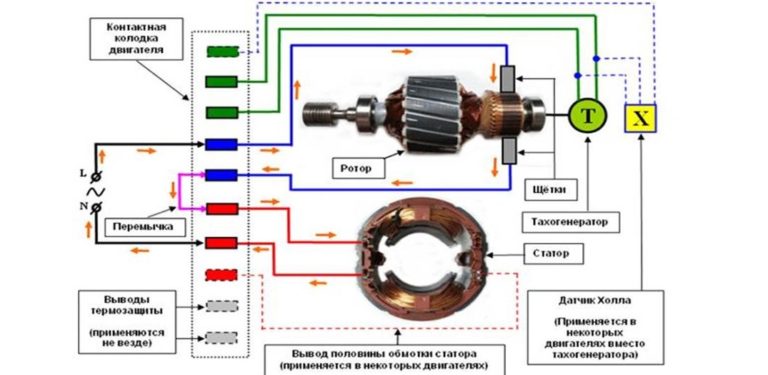
! Before connecting the motor, you need to study the electrical diagram and remember the safety precautions for working with electronics.
After analyzing this connection diagram, the questions should disappear. It will become clear where to connect the abundance of wires coming from the engine and how to organize external power. With such a cheat sheet, launching a new device will not take much time.
Dealing with the wires
The difficulty of using the motor outside the washing machine is that the abundance of wires frightens and confuses the technician. But usually a careful study of the connection diagram is enough to understand the meaning of the engine’s operation and correctly distribute the connected conductors. Not all cores will be needed to make the “rework”.
The following recommendations will help you finally understand the wires:
- the first pair of left wires (when looking at the motor from the front) is necessary for connecting to the tachogenerator, which controls the rotation speed of the device, and is not used for most homemade products;
- when connecting the engine, the rotor and stator wires are mainly used;
- the stator cores are painted red and brown;
- rotor wires have a gray or green tint;
- the motor is connected via 4 wires: two stators and two rotors;
- When operating from the mains, the engine does not need a starting capacitor and a starting winding.
In order for the engine to operate directly from the mains, it is necessary to establish a connection through the rotor and stator wires.
To avoid errors, all motor wires must be checked with a multimeter. We turn the tester into ohmmeter mode, touch the conductor with one probe, and look for a pair with the second. We immediately measure the resistance. The wires going to the tachogenerator will show about 70 Ohms - you can safely move them to the side.
Let's start connecting
Having determined the pairing of wires, you can begin to connect them. We are preparing material for insulation and mating of cores. Everything is done extremely carefully, and the following scheme is taken as a basis:
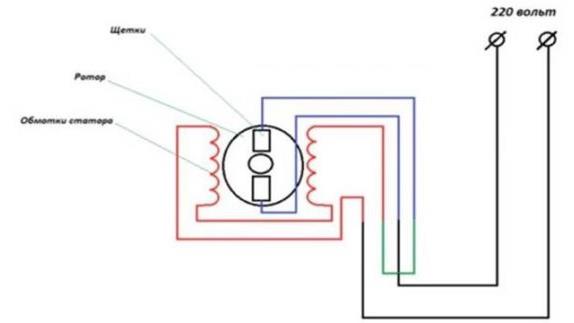
Based on this diagram, we act like this:
- connect the end of the stator winding and the rotor brush;
- we make a jumper (in the figure it is indicated by a green line) and isolate it;
- we supply 220 Volts to the end of the rotor winding and the brush wire;
- We evaluate the operation of the device.
If it is necessary to change the direction of rotation of the motor, the circuit should be adjusted. You will have to make a jumper on other wires, and also rearrange the cores from the rotor brushes. The modified circuit will look like this:
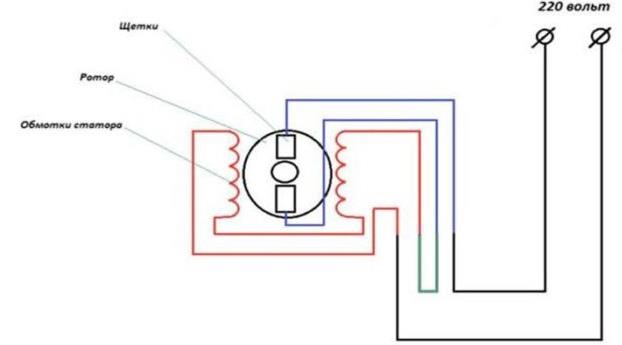
A properly turned on motor will begin to rotate. It is worth understanding that washing motors are characterized by increased power - you need to be extremely careful. It is important to take care of reliable fixation and your own safety. A faulty engine will not work.
Interesting:
Reader comments
- Share your opinion - leave a comment
Categories
Washing machine repair


For buyers

For users

Dishwasher


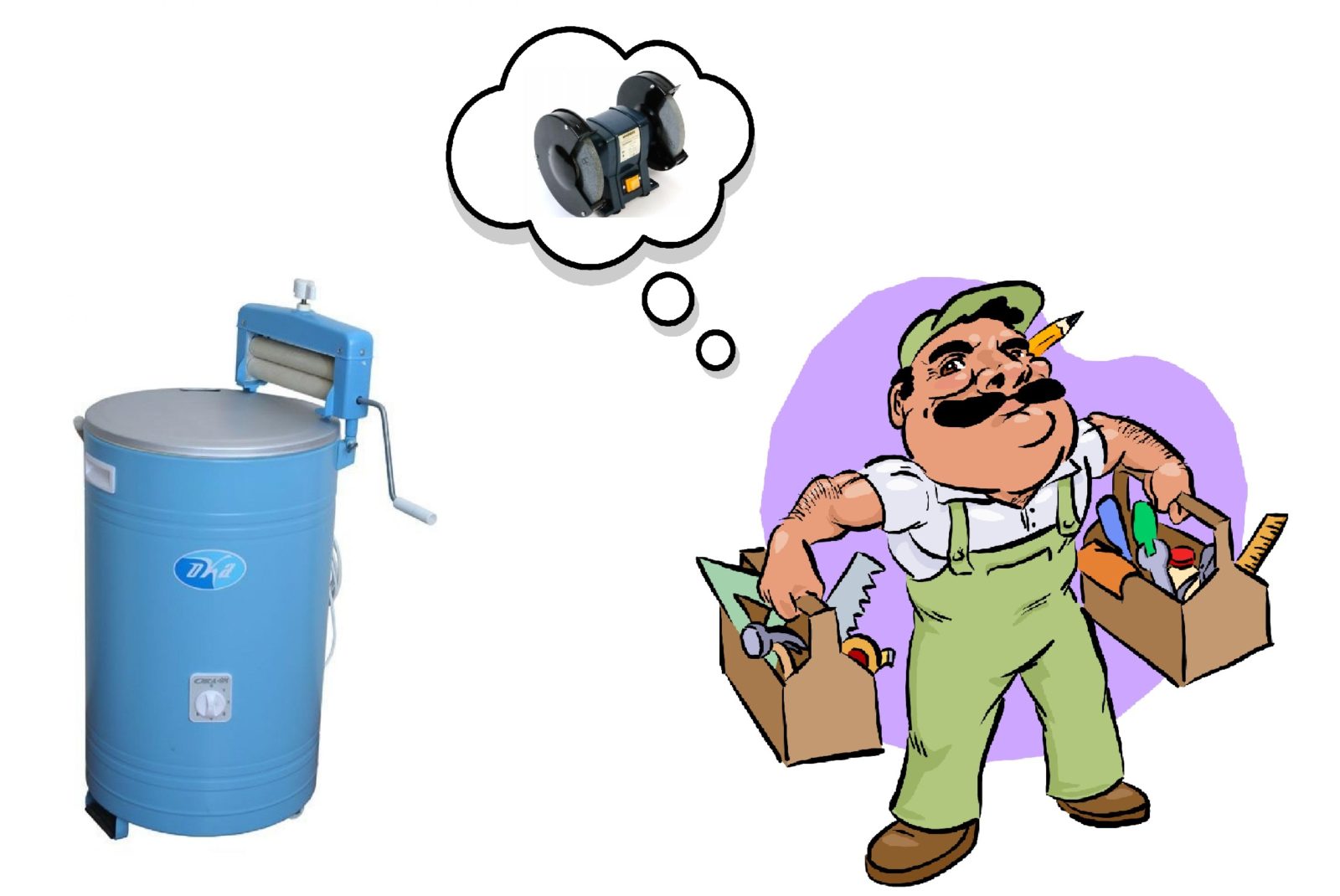


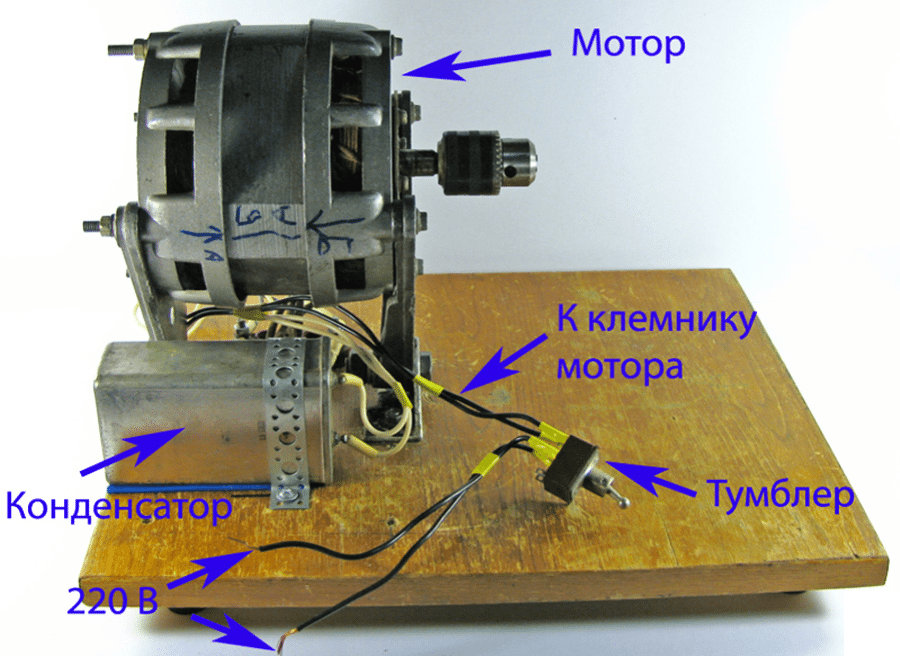
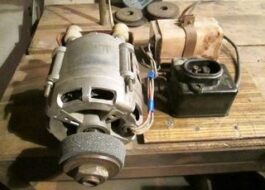










Add a comment